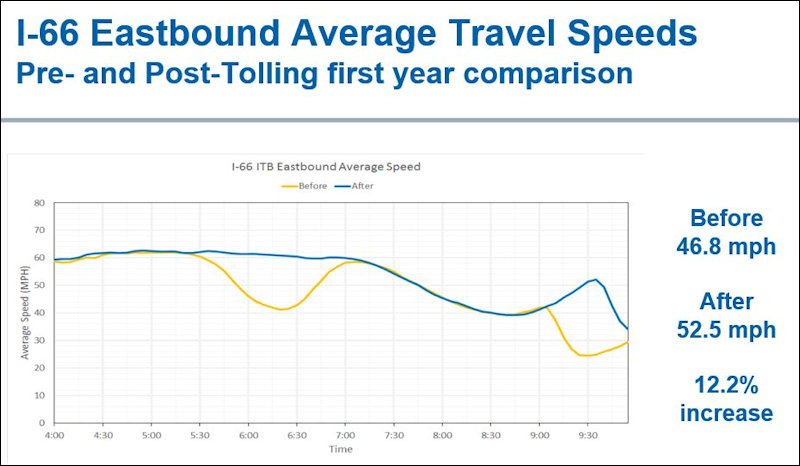
Did the implementation of tolls on Interstate 66 inside the Beltway hurt or harm rush-hour travel times? I addressed that issue yesterday based on data from a Washington Post article. Now I supplement that post with data direct from Deputy Secretary Transportation Nick Donohue.
The tolls have been widely criticized by commuters, many of whom recoil at charges that have exceeded $40 for a one-way trip during rush hour. However, average eastbound travel speeds improved 12.2% for all lanes in the year since the tolls were implemented, according to Virginia Department of Transportation data that Donohue cited in a presentation to the Joint Commission on Transportation Accountability last week. The greatest gains occurred between 6:00 and 6:30 a.m. and around 9:30 a.m.
VDOT data also shows that average travel speeds increased 2.8% on Rt. 50 eastbound, 10% on Rt. 29 eastbound, and 6.5% on Rt. 7 eastbound over the same period. Evening westbound traffic speeds improved even more on I-66: by 19.2%.
The use of High Occupancy Vehicles (carpooling) increased by 15%, eliminating nearly 2,000 car trips during rush hour.
Another benefit of the tolls, noted Donohue, is that they generate revenue for additional improvements to the transportation corridor. VDOT has invested $22 million to date in “new and enhanced bus service, park-in-ride lots, ITS and transportation demand management strategies.” VDOT is planning another $20 million in projects.

Leave a Reply
You must be logged in to post a comment.